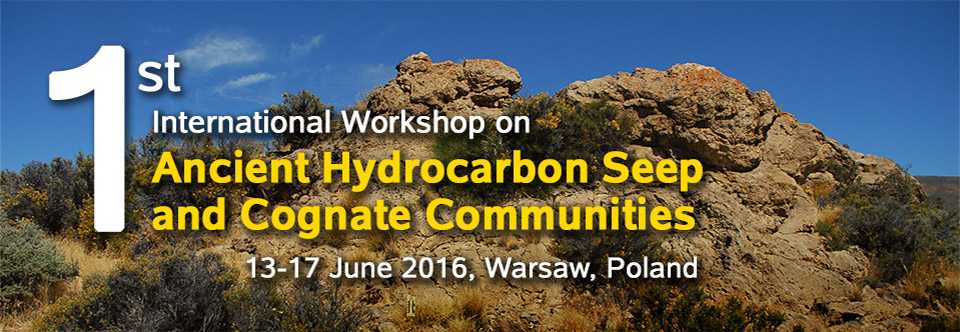
MIOCENE TO PLEISTOCENE HYDROCARBON SEEPS FROM THE JAPAN SEA REGION—FAUNAS, CARBONATE TEXTURES, AND ORIGINS OF HYDROCARBONS
Yusuke MIYAJIMA1
1Department of Geology and Mineralogy, Kyoto University, Kyoto, Japan.
Corresponding author: yusukemiya@kueps.kyoto-u.ac.jp
The Japan Sea is a backarc basin which formed in the early to middle Miocene, and there are
many modern seepages and accumulations of thermogenic hydrocarbons generated in the organic-
rich Cenozoic sediments in this basin. There are also many reports of possible ancient
hydrocarbon-seep deposits in the Japan Sea borderland. This study investigated several Miocene
to Pleistocene hydrocarbon-seep carbonates and fossils in the Japan Sea region from central to
northern Japan. Associated fossil contents and carbonate textures showed that the studied seep
carbonates can be classified into two types. Type 1 includes a few to several cm-sized, entirely
micritic concretions accompanied by vesicomyid, thyasirid, and other seep or non-seep molluscan
fossils. Type 2 is composed of large, several cm- to m-sized micritic carbonates having abundant
early-diagenetic void cements and containing bathymodiolin and provannid fossils as well as those
associated with Type 1 carbonates. The difference between these two types of carbonates may be
related to that of fluid flux and/or longevity of seepages. Despite the differences of fauna and texture,
almost all studied seep carbonates seem to have been formed by anaerobic oxidation of biogenic,
thermogenic, or mixed sources of methane based on stable inorganic carbon isotopes and
lipid biomarker evidences. Apart from those methane-seep carbonates, the upper Miocene Type 1
carbonates from one locality, Nakanomata, could have been related to oxidation of non-methane
hydrocarbons such as oil. These Cenozoic hydrocarbon seeps show that there have been hydrocarbon
seepages characterized by different fluxes and origins of hydrocarbons ubiquitously in the
Japan Sea region since its formation.
